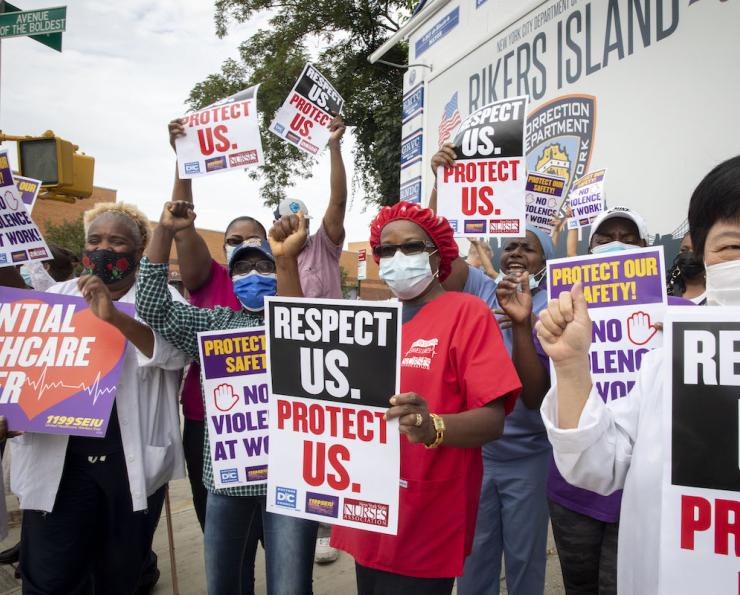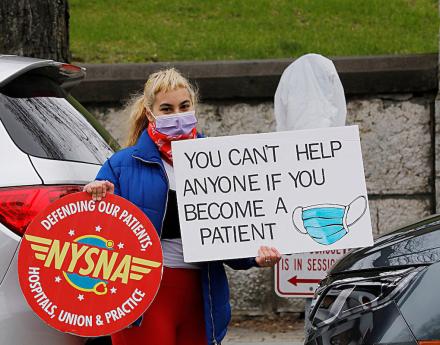Workplace Violence
Workplace violence is endemic in healthcare facilities — and on the rise. Nurses and direct care aides experience the highest levels of workplace violence of any profession. Learn more about the reasons violence is increasing and how nurses can work together to reduce violence and harm at work.

Workplace violence is endemic in healthcare facilities. According to the National Institute for Occupational Safety and Health (NIOSH), nurses and direct care aides experience more violence than any other hospital personnel.
While overall occupational injury and illness rates in the U.S. are falling, workplace violence is on the rise, particularly in the healthcare setting. The National Crime Victimization Survey reports that healthcare workers experience a 20% higher rate of violence than all other professions. However, there are many effective ways to identify workplace violence hazards and decrease the risk of violence in healthcare facilities.
Violence in Healthcare Is on the Rise
The rate of violence in healthcare and social service workplaces has risen 70% between 2006 to 2020. Some of the reasons for this increase in violence include:
- Downsizing, including consistent understaffing.
- Declining availability of mental health services.
- Delays in care and services for patients (see first point above).
- Poorly designed work areas.
- Free-for-all facility visitation policies.
- Porous nature of access to healthcare facilities combined with low levels of security.
- Lack of protocols to address the challenges of patients and visitors with a history of violent behavior.
- Dramatic increases in substance use disorders.
- Increasing violence in society.
- Increasing access to guns.
Workplace Violence Prevention
Although it may not be possible to completely remove the risk of violence in the healthcare setting, there are many ways to decrease that risk, including:
- Adequate staffing of registered nurses and other personnel to ensure patients receive proper care in a timely manner.
- Increased access to mental health services both in the community and in healthcare facilities.
- Workplace design that allows for controlled access into and throughout the facility, barriers where needed, weapon detection systems, proper line of sight for security personnel and safe egress for staff in emergency situations.
If You're Assaulted on the Job
Take these steps if you’re assaulted on the job:
- Seek medical care immediately.
- Report the assault to your supervisor and file an incident report.
- File a workers' compensation claim.
- Contact your NYSNA representative to inform them of the incident and to receive assistance if needed, or contact the NYSNA Occupational Health and Safety representatives at healthandsafety@nysna.org.
- Consider contacting your local police to press charges. Under certain conditions, assaulting a nurse is a Class D felony under New York state law.
Protection for Public Sector Nurses
The New York State Department of Labor Public Employee Safety and Health Bureau (PESH) requires public sector employers in New York to institute workplace violence prevention programs. These programs must include:
- Employer/employee collaboration.
- Risk hazard assessment.
- Implementation of controls.
- Records review, walk-through.
- Written policy statement.
- Written program.
- Training.
- Recordkeeping and reporting.
- Periodic review (at least annually).
